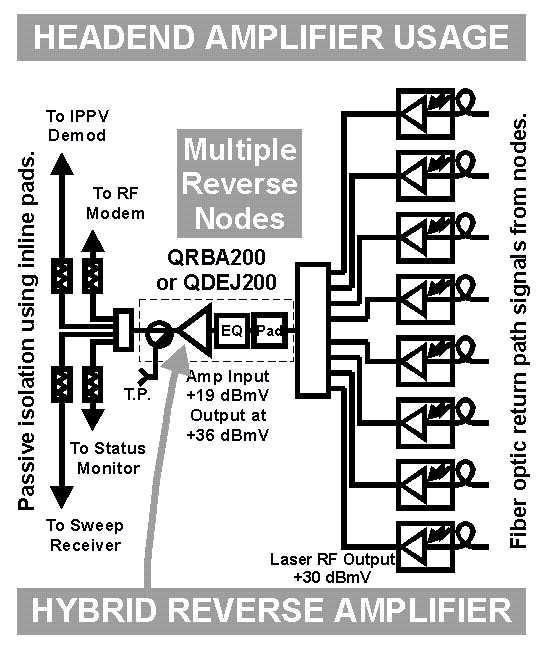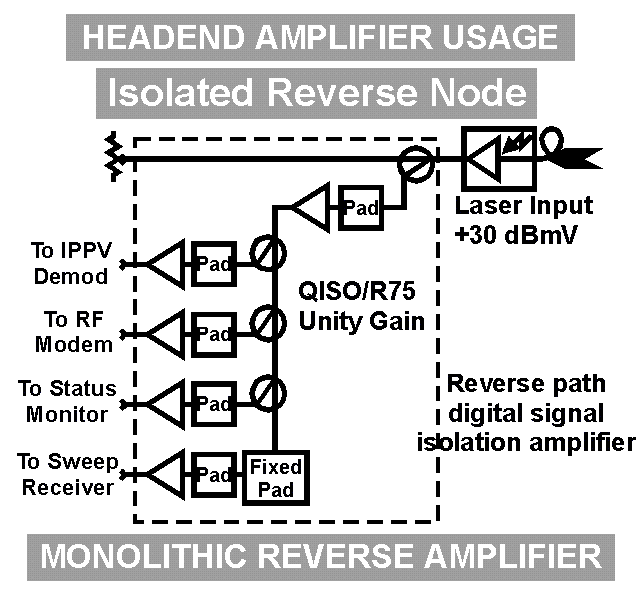| HYBRID REVERSE AMPLIFIER and PASSIVE ISOLATION |
| This is the high-level approach to reverse path headend isolation. Hybrid amplifiers like our QRBA 050 or QRBA 200 may be used with any type of return signals, analog or digital. In Figure 9, the eight fiber nodes are combined using a conventional 8-way splitter, which has a typical low-frequency loss of 11 dB. The parallel paths of course add their broadband noise, which acts to limit the number of nodes that can be processed together. Bit-error rates become excessive when too many nodes are combined. The typical level of many return lasers is +30 dBmV. The input to the hybrid amplifier usually does not need an equalizer since the input to reverse laser transmitters is FLAT. |
| Output isolation relies on brute force padding on a common passive splitter as shown in figure 2 earlier in the presentation. In Figure 9, the use of 10 dB inline pads will provide 50 dB port-to-port isolation to the various return path processing devices. This isolation to feed digital receiving equipment prevents local oscillator radiation from the input of one device from affecting any other receiving device fed from the return path. |
| Figure 9. ( Right ) Click for larger printable graphic. |

